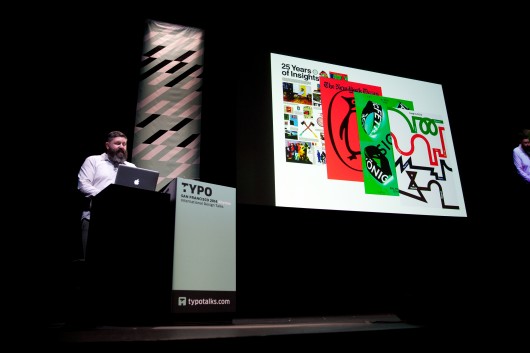The first director of the Walker was an architect who instilled the value that design has a value in institution. They released the Design Quarterly, which many, if not all, designers are familiar with, and put on many design exhibitions. The in house design team of the Walker are responsible for all communications, marketing, outdoor campaigns, motion graphics, signage and publications. All of the design pieces ever done by the team (75 years!) is archived for the world to see. They also provide a series of design lectures every year called Insights that has been going on for 28 years.
Byrne explained that when framing the content they do it in a way that is true to the artists actual intent. He showed us a video called Painting Yellow Scream which was a fake painting tutorial in the style of Bob Ross. The Walker purchased it to use it in their galleries but when they uploaded it to Youtube it was able to be taken, ripped and remixed as much as possible and the control had been lost. This loss of control posed the statement that Youtube wasn’t the audience meant to see this art. He mentions how it is a painful thought that they could only show art in the rarified environment of a gallery. This was an example of understanding the sending of content into the world and not being able to frame it the way it was meant to be framed.

Emmet Byrne
He went from speaking of losing control of content to a kind of content that will always be framed, the book. The remainder of the talk was a spectacular lecture of content being produced for publications. The Walker Arts Center website and blog bring in all the departments and include many new articles on design. One that is worth reading is Byrne’s article on the Westborough Baptist Church’s typeface. Byrne ends on “I titled this talk Oblique Content Strategies mostly as an aspiration. Because I’m interested in creating an integrative and efficient publishing and communication ecosystem at the Walker but also equally interested in responding to these content streams with lateral thinking.
Asking how our artists can utilize these platforms trying to reconcile how we can speak with one voice and many voices at the same time. enjoying the fact that transmitting idea in and of itself is part of our mission. And exploring the ways publishing can happen anywhere and in the most unexpected places.”
– India Sabater @IndigoPlatinum











 Photo by: Amber Gregory
Photo by: Amber Gregory









